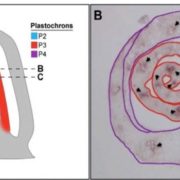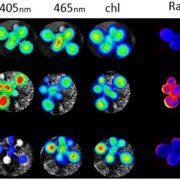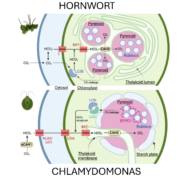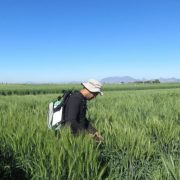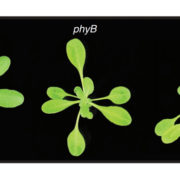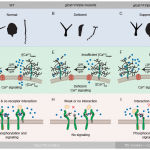Multi-omics reveals mechanisms of total resistance to extreme illumination of a desert alga (Nature Plants)
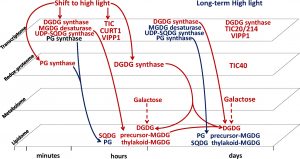 The green alga Chlorella ohadii was recently isolated from the harsh environment of desert biological sand crusts, where it is able to grow and thrive in extreme conditions. Previously, studies showed that it is unusually resistant to photodamage, even at twice the irradiance of maximal sunlight thanks to mechanisms that maintain high rates of photosynthesis and growth under extreme irradiances that usually damage the photosystem II (PSII) and saturate photosynthesis. To further explore its resistance to photodamage, Treves et al. grew C. ohadii cells in photobioreactors under three irradiance regimes: 100 μmol photons m−2 s−1 (LL), 3,000 μmol photons m−2 s−1 (continuous extreme irradiance level – EIL) and 18.5 h LL followed by a shift to EIL (LL→EIL), and generated multi-omics analysis at different times after exposure to EIL. After 3 min under EIL, C. ohadii cells showed a rapid post-translational redox response, which promoted NADPH shuttling, NADPH consumption, heat shock responses, and lipid biosynthesis. The transfer to EIL induced the CO2-concentrating mechanism (CCM), which facilitated a lower rate of photorespiration, verified by a fall in glycolate levels and looseness of photorespiration gene expression. The unusual C. ohadii response of thylakoid stacking under EIL conditions was explained by the increase in digalactosyldiacylglycerol content, which promotes stacking. The authors suggest that highly efficient reductant utilization preceded the evolution of a stable PSII, but further studies are needed. (Summary by Elisandra Pradella @Elisandra_MP) Nature Plants 10.1038/s41477-020-0729-9
The green alga Chlorella ohadii was recently isolated from the harsh environment of desert biological sand crusts, where it is able to grow and thrive in extreme conditions. Previously, studies showed that it is unusually resistant to photodamage, even at twice the irradiance of maximal sunlight thanks to mechanisms that maintain high rates of photosynthesis and growth under extreme irradiances that usually damage the photosystem II (PSII) and saturate photosynthesis. To further explore its resistance to photodamage, Treves et al. grew C. ohadii cells in photobioreactors under three irradiance regimes: 100 μmol photons m−2 s−1 (LL), 3,000 μmol photons m−2 s−1 (continuous extreme irradiance level – EIL) and 18.5 h LL followed by a shift to EIL (LL→EIL), and generated multi-omics analysis at different times after exposure to EIL. After 3 min under EIL, C. ohadii cells showed a rapid post-translational redox response, which promoted NADPH shuttling, NADPH consumption, heat shock responses, and lipid biosynthesis. The transfer to EIL induced the CO2-concentrating mechanism (CCM), which facilitated a lower rate of photorespiration, verified by a fall in glycolate levels and looseness of photorespiration gene expression. The unusual C. ohadii response of thylakoid stacking under EIL conditions was explained by the increase in digalactosyldiacylglycerol content, which promotes stacking. The authors suggest that highly efficient reductant utilization preceded the evolution of a stable PSII, but further studies are needed. (Summary by Elisandra Pradella @Elisandra_MP) Nature Plants 10.1038/s41477-020-0729-9


